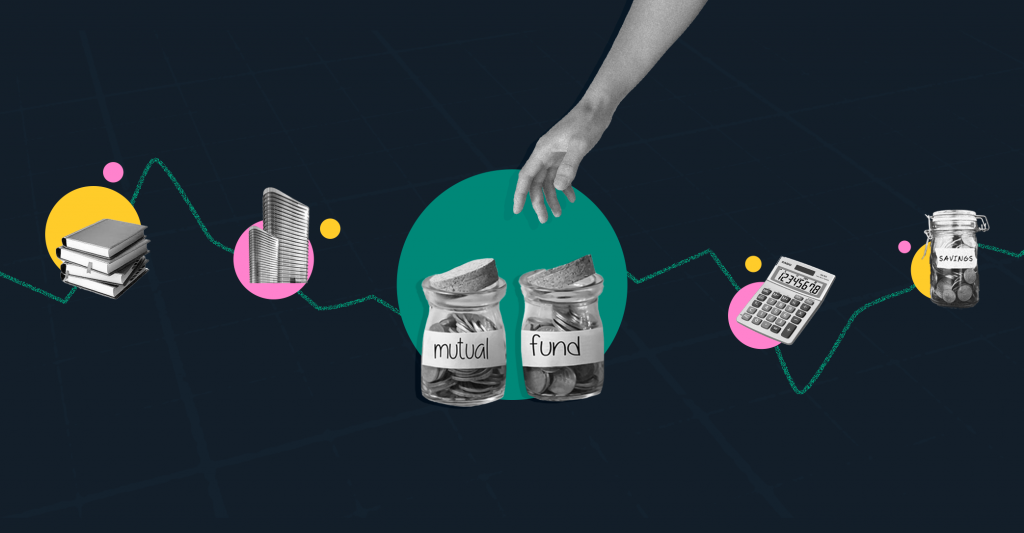Last Updated on Aug 31, 2021 by Aradhana Gotur
Investing in equity mutual funds is a lucrative proposition that allows investors to potentially earn attractive returns with growth in the equity market while having access to a fund manager to manage the money. However, one cannot ignore the high risk associated with equity investments.
Equity markets are highly volatile, and if you happen to enter at the wrong time, you could suffer capital erosion. This is true for investments that are pegged to the market price of other assets too, for example, a Gold ETF. That said, timing the market is not easy (probably not possible to do with accuracy!). Even the most seasoned investors can make mistakes. But, what if the risk of timing the market is taken out of the equation?
Introducing to you the concept of STP in mutual funds. STP or Systematic Transfer Plans helps minimize the risk of exposure to one particular asset class that is trending down without losing out on the benefit of rupee cost averaging. Let’s understand what it is and how it works.
This article covers:
- What is STP in mutual fund
- Features of the Systematic Transfer Plan
- Types of STPs
- Benefits of STP
- How to start an STP in mutual fund
- Who should invest via STPs in mutual funds?
- Things to remember when investing via STP
Table of Contents
What is STP in mutual fund?
STP stands for Systematic Transfer Plan. As the name suggests, a systematic transfer plan enables investors to transfer their holdings from one mutual fund to another, little by little, without redeeming or selling the investment. Under this system, you invest a lump sum amount in a mutual fund scheme. Thereafter, a chosen amount is directed from that mutual fund scheme to another mutual fund scheme. The most logically common transfers are from debt funds to equity funds.
For example, say you invested Rs 1 lakh in Fund A as a lump sum. For any reason, that the fund performance is not upto your expectation, or that your risk appetite has changed, or any such, you decide Fund A is not suitable for you anymore. Instead of selling the fund and paying transaction charges, if any, etc., and then making a re-entry into another mutual fund, again paying an entry load, an STP allows you to simply switch out.
Therefore, you opt for an STP of Rs 5000, every month, to an equity fund called Fund B. Now, Rs 5000 would be transferred from Fund A to Fund B every month until your investment in Fund A is exhausted. Additionally, an advantage of STP in mutual funds is that it helps you to allocate your investment to equity in a staggered manner so that you don’t expose all of your investment to volatility risks at once.
Features of the Systematic Transfer Plan
There are various features of the Systematic Transfer Plan offered by mutual fund schemes.
- Investment needed: Though there is no mandate on the minimum investment needed to opt for STP, mutual fund companies usually require a minimum investment of Rs 12,000 in the primary fund.
- Minimum transfers: You are required to opt for a minimum of 6 STPs from one fund to another.
- Charges: STPs are free of cost facilities. However, there might be an exit load applicable when the amount is transferred from one fund to another.
- Types of fund: You can choose any fund as the initial fund into which you invest the lump sum amount. Moreover, you can also choose any target fund into which the money would be credited. Usually, investors invest a lump sum in a debt fund and then choose an equity fund as the target fund to invest in equity in a staggered manner.
- Taxation: Every time an STP occurs, the amount transferred is liable to capital gains tax. In the case of a debt fund, if the transfer happens within 36 mth of investment, short term capital gains tax would apply and the transferred amount would be taxed at your income tax slab rates. For transfers after 36 mth, long term capital gains would apply. The gains would be taxed at 20% with indexation benefit.
Types of STPs
When it comes to STP, mutual fund companies allow different choices to you. Here are the types of STPs that you can choose from:
| Type of STP | Description |
| Fixed STP | The most common type of STP, fixed STPs, include a fixed amount of money that is transferred from one fund to another. |
| Flexi STP | Opposite of fixed STP, under flexi STP you can choose to transfer different amounts at different times. |
| Capital appreciation STP | Under this type of STP, you invest only the return earned from one fund to another.For example, say you invest Rs 1 lakh in a fund and after a month the fund grows to Rs 1,01,000. Under the capital appreciation STP, Rs 1000, which is the profit earned, would be transferred to another fund. |
Benefits of STP
Investors choose STP in mutual funds because of the various benefits that they get. These benefits can be summarised in the following points:
- Minimizing risks: Since you do not enter the equity market all at once, you can protect the bulk of your investment from volatility risk. By entering the equity market in a phased manner, you can minimize the risk.
- Rupee cost averaging: As the transfer to equity funds happens at different intervals, you get different NAVs. The effective NAV of your investment is, thus, averaged out and you get the benefit of rupee cost averaging.
- Best of both worlds: When you invest in one fund and then transfer to another, you get to enjoy returns on both the funds. The source fund earns returns on the bulk of the investment done while the target fund earns returns on the money that is transferred regularly. This helps you maximize the return potential of your investments while minimizing the risks.
- Portfolio rebalancing: You can rebalance the exposure to equity and debt through STP as the facility allows you to transfer your assets from one fund to another as per your investment strategy.
How to start an STP in mutual fund?
Step 1: Starting an STP is simple and can be done online. You have to make a large lump sum investment into a mutual fund of your choice.
Step 2: You may then choose a target fund and the type of STP that you want, i.e. fixed, flexi or capital appreciation.
Step 3: Choose the amount of STP, the tenure, and the frequency
Step 4: The STP would start and your lump sum investment would be transferred in palatable parts into another fund as per the details that you have entered.
Who should invest via STPs in mutual funds?
Investors who want the benefit of equity-linked returns but are wary of taking on the underlying risk at once can choose STPs. They can invest in equity in a systematic manner and thus, enter the equity markets slowly. In some sense, it is similar to a SIP – systematic investment plan, but in STP, you get the benefit of earning returns from 2 funds.
Moreover, new investors who want to test the equity investing waters can opt for STPs and invest in equity slowly. STP can also be chosen by investors looking to rebalance their portfolio or those who want to avoid the challenge of timing the market when investing in equity.
Things to remember when investing via STP
Though beneficial, here are a few things that you should consider when choosing the STP route of investment:
- STPs minimize risks. They don’t eradicate them completely. Know that your mutual fund investments would be subjected to market risks.
- Choose STPs only when you have a lump sum amount of money to spare.
- Have a long term investment horizon to realise the full potential of STP.
- Assess the exit load applicable and choose funds that have the lowest loads.
- Have patience and discipline to stay invested even when the market fluctuates. Remember, over the long term, risks are usually ironed out.
- A minimum of 6 STPs is a must
Understand what is STP mutual fund and how it works before you choose it as your preferred mode of investing. STPs can be quite beneficial in reducing equity risks without compromising on the returns. So, opt for STPs when investing in mutual funds but only if they cater to your investment needs and risk profile.
- Top Large Cap Funds 2025: Discover Blue Chip Performers - Mar 27, 2025
- Gilt Funds in India: Features, Meaning, and Advantages - Mar 13, 2025
- Best Index Funds in India 2025: Top Performing Mutual Funds - Mar 13, 2025




